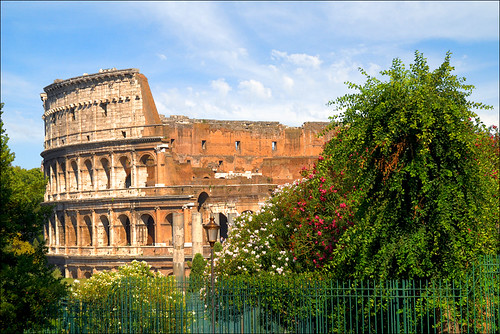Some cool christian travel sites images:
The Colosseum from Palatine Hill

Image by MarcelGermain
Rome (Italy).
The Colosseum, originally the Flavian Amphitheatre, is an elliptical amphitheatre in the center of the city of Rome, the largest ever built in the Roman Empire. It is one of the greatest works of Roman architecture and Roman engineering.
Occupying a site just east of the Roman Forum, its construction started around 70 AD under the emperor Vespasian and was completed in 80 AD under Titus, with further modifications being made during Domitian’s reign (81–96).
Capable of seating 50,000 spectators, the Colosseum was used for gladiatorial contests and public spectacles. As well as the gladiatorial games, other public spectacles were held there, such as mock sea battles, animal hunts, executions, re-enactments of famous battles, and dramas based on Classical mythology. The building ceased to be used for entertainment in the early medieval era. It was later reused for such purposes as housing, workshops, quarters for a religious order, a fortress, a quarry, and a Christian shrine. It has been estimated that about 500,000 people and over a million wild animals died in the Colosseum games.
Although in the 21st century it stays partially ruined due to damage caused by devastating earthquakes and stone-robbers, the Colosseum is an iconic symbol of Imperial Rome and its breakthrough achievements in earthquake engineering. It is one of Rome’s most popular tourist attractions and still has close connections with the Roman Catholic Church, as each Good Friday the Pope leads a torchlit "Way of the Cross" procession around the various levels of the amphitheatre. The Colosseum is also depicted on the Italian version of the five-cent euro coin.
[Adapted from Wikipedia]
Toledo con el Alcazar

Image by Javier Corbo
Toledo is a municipality located in central Spain, 70 km south of Madrid. It is the capital of the province of Toledo. It is also the capital of autonomous community of Castile-La Mancha. It was declared a World Heritage Site by UNESCO in 1986 for its extensive cultural and monumental heritage as one of the former capitals of the Spanish Empire and place of coexistence of Christian, Jewish and Muslim cultures, as well as the place where harsh religious persecutions were held against the Jews.

